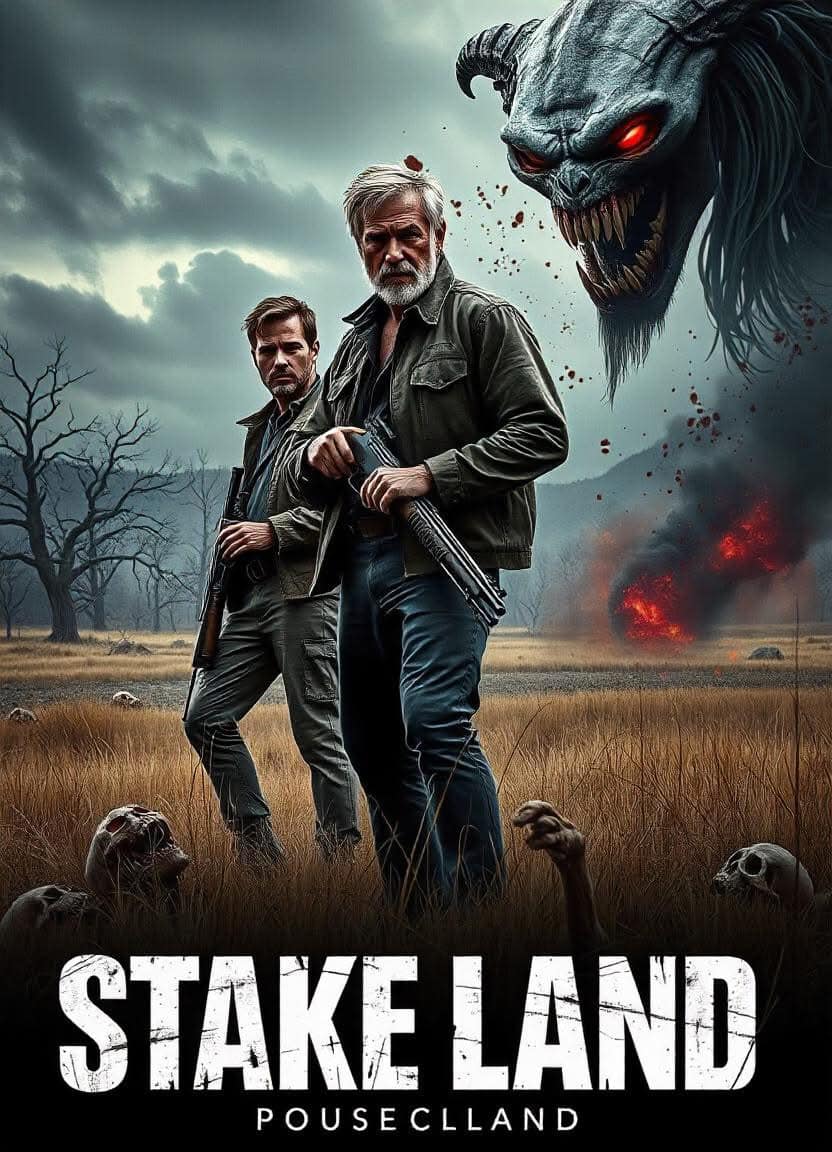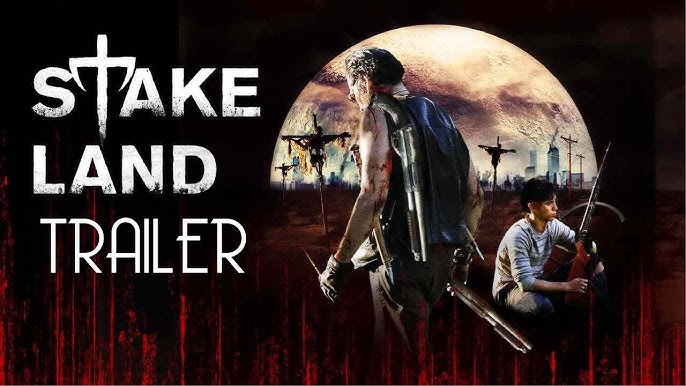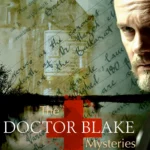Stake Land (2011)

Directed by Jim Mickle, Stake Land is a standout entry in the post-apocalyptic horror genre. By combining gritty realism with the undead menace of vampires, the film offers a harrowing tale of survival, humanity, and the lengths people will go to endure in a broken world.
Plot Summary:
In the aftermath of a vampire apocalypse, the United States lies in ruins. Martin (Connor Paolo), a teenager who witnesses the violent loss of his family, is saved by a seasoned vampire hunter known only as Mister (Nick Damici). Together, they embark on a perilous journey northward, aiming for the fabled safe haven of New Eden in Canada.
As they traverse this bleak landscape, they confront numerous threats—ravenous vampires, decaying towns, and desperate human factions. Among the most dangerous adversaries is The Brotherhood, a religious cult led by the fanatical Jebedia Loven (Michael Cerveris), who views the vampires as divine punishment and worships them as instruments of God’s will.
Along the way, Mister and Martin form an unlikely bond, meeting allies like Sister (Kelly McGillis), a nun fleeing the horrors of the new world; Belle (Danielle Harris), a young pregnant woman with dreams of safety; and Willie (Sean Nelson), a resourceful Marine. Each encounter brings new challenges, deepening the film’s exploration of survival and humanity.
Key Themes:
- Survival and Humanity:
- The film delves into the moral complexities of survival, questioning how much humanity one can retain when life becomes a constant battle.
- Mister serves as a mentor to Martin, teaching him the skills needed to survive but also imparting a harsh perspective on trust and sacrifice.
- Coming of Age:
- Martin’s transformation from a sheltered boy to a hardened survivor is at the core of the narrative. His journey reflects the loss of innocence and the harsh realities of adulthood in a world where the rules of morality have shifted.
- Faith and Fanaticism:
- The Brotherhood adds a layer of danger beyond the vampires, showcasing the destructive power of zealotry in desperate times.
- This theme challenges traditional views of good and evil, presenting the cult as a twisted reflection of humanity’s darker side.
- Hope and Despair:
- The constant push toward New Eden symbolizes the fragile hope that keeps the survivors moving forward, even as they face overwhelming despair.
Why It Stands Out:

- Atmosphere:
Stake Land is steeped in a grim, apocalyptic aesthetic. Bleak, desolate landscapes contrast with moments of quiet beauty, creating a visually arresting world that feels eerily realistic. - Character-Driven Narrative:
The dynamic between Martin and Mister drives the story, offering a blend of mentorship and partnership that feels authentic and emotionally resonant. - Fresh Take on Vampires:
These vampires are feral, brutal, and primal—a departure from romanticized depictions. Their mindless aggression makes them terrifying predators, reminiscent of zombies with a vampiric twist. - Gritty Realism:
The film eschews large-scale CGI and bombastic action for a grounded, intimate approach. The horror is personal, the stakes are immediate, and the tension is palpable.
Memorable Performances:
- Nick Damici as Mister: A stoic, battle-hardened figure with a sense of quiet nobility.
- Connor Paolo as Martin: A compelling portrayal of vulnerability and growth in the face of adversity.
- Michael Cerveris as Jebedia Loven: A chilling performance as the cult leader, blending charisma and menace.
Legacy and Impact:
Stake Land has earned a devoted following for its mature storytelling and atmospheric approach to horror. It received critical acclaim for its blend of emotional depth, social commentary, and visceral thrills. The success of the film led to the release of a sequel, Stake Land II (2016), which continues the saga of survival in this brutal world.
Tagline:
“The most dangerous thing isn’t what lurks in the dark—it’s what lurks within.”
For fans of The Road, A Quiet Place, and Train to Busan, Stake Land is an unforgettable journey into the heart of apocalyptic horror.










